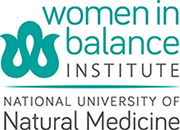 Deciding what type of milk to buy can be a daunting task. It seems like everyone has his or her own take on what is healthy. Organic seems like the best choice, but it can be so expensive. Is the cost really worth it?
Deciding what type of milk to buy can be a daunting task. It seems like everyone has his or her own take on what is healthy. Organic seems like the best choice, but it can be so expensive. Is the cost really worth it?
In order for a dairy to be certified organic the cows must receive 30% of their dry food from pasture at least 120 days of the year. The pasture and organic feed raise the cost of the overall product. Conventionally raised dairy cows have no such pasture requirement and are generally fed a diet higher in grains.
In December 2013 researchers at Washington State University weighed in on the discussion. The research team compiled the first ever “large scale national milk-fat composition survey in the United States comparing milk from organic and conventional farms1.” Based on results from 378 samples from 7 regions over 18 months, the researchers determined that there is a difference in fatty acid content between conventional and organic milk.
Currently, Americans are consuming far more omega-6 fatty acids and far less omega-3 fatty acids than is recommended. Historically, the ratio of omega-6 to omega-3 fatty acids that humans consumed is 1 to 1. But current Western diets contain ratios of about 15 to 1. The rise in omega-6 fatty acids has been implicated as a contributing factor in many chronic diseases that plague much of America2. Decreasing this ratio has been recommended to combat diseases such as cardiovascular disease and certain cancers. People are often told to increase their consumption of fish, walnuts and flaxseed in order to up their omega-3 levels. But Benbrook et. al, discovered another potential way to alter your omega ratios: switch from conventional milk to organic. According to the scientists, organic milk contains an average omega-6 to omega-3 fatty acid ratio of 5 to 8 while organic milk has a ratio of 2 to 3.
This research also calls into question the skim/low-fat versus whole milk debate. Whole milk contains 4% fat while low-fat contains 2% and skim contains no fat and thus no omega-3 fatty acids. “Consumers are going to get the full measure of this benefit in organic milk if they buy whole milk,” Benbrook stated in the Los Angeles Times in December3.
Another systematic review out this month concluded that “observational evidence does not support the hypothesis that dairy fat or high-dairy foods contribute to obesity or cardiometabolic risk4.” Kratz et. al also found that high-fat dairy consumption within a typical American diet is inversely associated with obesity risk. The paper noted that inconsistent findings of various studies investigating the connection between dairy fat and diabetes or cardiovascular disease may be at least in part due to the feeding practices (pastured versus grain fed) of dairy cows in the different studies.
Take home message: If your family consumes milk and dairy products, consider switching to organic or pastured full-fat dairy in order to receive the greatest health benefits.
- Benbrook CM, Butler G, Latif MA, Leifert C, Davis DR. Organic Production Enhances Milk Nutritional Quality by Shifting Fatty Acid Composition: A United States–Wide, 18-Month Study. PLoS ONE. 2013;8(12):e82429. doi:10.1371/journal.pone.0082429.
- Simopoulos AP. The importance of the ratio of omega-6/omega-3 essential fatty acids. Biomed Pharmacother Bioméd Pharmacothérapie. 2002;56(8):365–379.
- MacVean M. Organic whole milk provides best heart-health benefits, study says. Los Angeles Times. http://articles.latimes.com/2013/dec/10/news/la-sn-organic-milk-20131210. Published December 10, 2013. Accessed February 13, 2014.
- Kratz M, Baars T, Guyenet S. The relationship between high-fat dairy consumption and obesity, cardiovascular, and metabolic disease. Eur J Nutr. 2013;52(1):1–24. doi:10.1007/s00394-012-0418-1.
Written by Laura Galati. NCNM Naturopathic Medicine Program Edited by Dr. Elise Schroeder

